Posted on March 6th, 2011 by Mary Lord
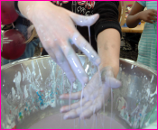 From the “miracle fiber” Kevlar invented by Dupont chemist Stephanie Kwolek to Silly Putty, our world abounds with materials discovered by accident. In this activity from the Society of Women Engineers (SWE), students will learn some serious materials science–and hit several national science and tehcnology standards–by using everyday items to create and investigate the properties of Funny Putty.
From the “miracle fiber” Kevlar invented by Dupont chemist Stephanie Kwolek to Silly Putty, our world abounds with materials discovered by accident. In this activity from the Society of Women Engineers (SWE), students will learn some serious materials science–and hit several national science and tehcnology standards–by using everyday items to create and investigate the properties of Funny Putty.
Read More
Filed under: Class Activities, Grades 6-8, Grades 6-8, Grades K-5, Grades K-5, Lesson Plans | 1 Comment »
Tags: Class Activities, Curriculum, Lesson Plan, Lesson Plans, Slime
Posted on March 6th, 2011 by Mary Lord
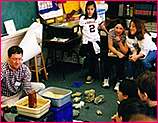 Elementary schools are struggling to fit science lessons into a school day packed with other subjects, particularly reading and math that are tied to accountability measures. The amount of science instruction varies by school and district, but many educators say students need more hands-on lessons beginning in elementary school to help prepare them for careers in science fields.
Elementary schools are struggling to fit science lessons into a school day packed with other subjects, particularly reading and math that are tied to accountability measures. The amount of science instruction varies by school and district, but many educators say students need more hands-on lessons beginning in elementary school to help prepare them for careers in science fields.
Read More
Filed under: K-12 Education News | Comments Off on Stuffing Science Into Tight Schedules
Tags: Curriculum, Lesson Plan, Lesson Plans, Teachers
Posted on February 20th, 2011 by ASEE
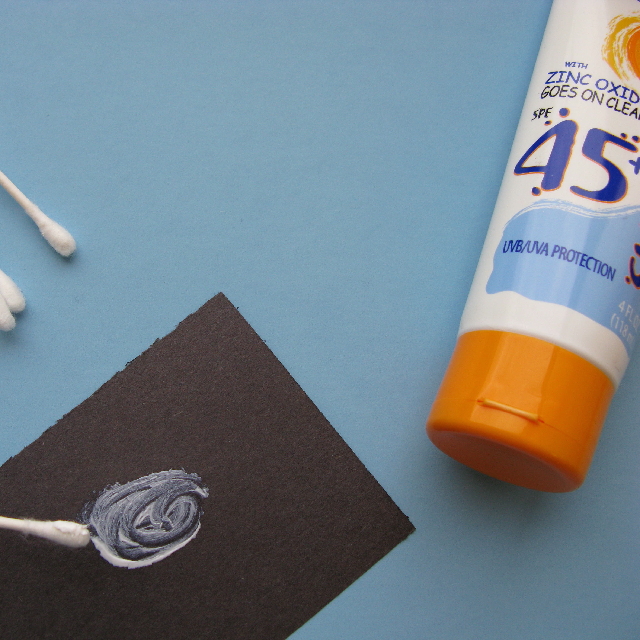 In this quick, hands-on lesson, students in grades K-12 compare sunblock containing nanoparticles to those that do not and learn how nanoparticles are used to help block harmful rays from the sun.
In this quick, hands-on lesson, students in grades K-12 compare sunblock containing nanoparticles to those that do not and learn how nanoparticles are used to help block harmful rays from the sun.
Read More
Filed under: Grades 6-8, Grades 9-12, Grades K-5, Lesson Plans | 1 Comment »
Tags: Grades K-12, Lesson Plan, Nanodays, Nanotechnology
Posted on February 6th, 2011 by ASEE
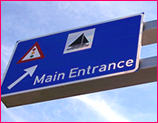 In this lesson, students in grades 6-12 use simple materials to design, build, and test a model of a free-standing structure used to support overhead road signs. They begin by learning about the engineering design process and researching about support structures. They then work in groups to design and build their own sign supports. The final designs are tested to see how they stand up to two different types of loads.
In this lesson, students in grades 6-12 use simple materials to design, build, and test a model of a free-standing structure used to support overhead road signs. They begin by learning about the engineering design process and researching about support structures. They then work in groups to design and build their own sign supports. The final designs are tested to see how they stand up to two different types of loads.
Read More
Filed under: Grades 6-8, Grades 9-12, Lesson Plans | 1 Comment »
Tags: Architectural, Civil Engineering, Engineering Design, Engineering Design Process, Grades 6-12, Lesson Plan, Transportation
Posted on January 23rd, 2011 by ASEE
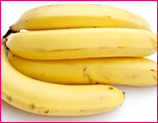 In this lab activity, students in grades 5 through 9 use a salt/detergent mixture to make a piece of a banana water soluble. Then they add cold ethanol to precipitate a froth of white DNA from the solution. With careful technique the slender threads are wound onto a glass rod for observation of deoxyribonucleic acid, the master code or blueprint of all organisms.
In this lab activity, students in grades 5 through 9 use a salt/detergent mixture to make a piece of a banana water soluble. Then they add cold ethanol to precipitate a froth of white DNA from the solution. With careful technique the slender threads are wound onto a glass rod for observation of deoxyribonucleic acid, the master code or blueprint of all organisms.
Read More
Filed under: Grades 6-8, Grades 9-12, Grades K-5, Lesson Plans | 1 Comment »
Tags: Bioscience, Lesson Plan, Science Experiments
Posted on November 21st, 2010 by ASEE
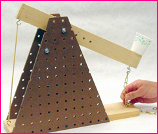 In this lesson, students in grades 4-12 learn about the history of catapults and how they work. They assemble their own catapult model, making adjustments to improve its performance. Students gain engineering experience while learning principles of physics and working with the scientific processes of experimentation and trial and error.
In this lesson, students in grades 4-12 learn about the history of catapults and how they work. They assemble their own catapult model, making adjustments to improve its performance. Students gain engineering experience while learning principles of physics and working with the scientific processes of experimentation and trial and error.
Read More
Filed under: Class Activities, Grades 6-8, Grades 6-8, Grades 9-12, Grades K-5, Grades K-5, Lesson Plans | Comments Off on Lesson: Build a Catapult
Tags: catapult, Class Activities, Engineering in History, forces and motion, Grades 5-12, Grades 6-8, Lesson Plan, Mathematics, Newton's Laws, Physical Science
Posted on October 25th, 2010 by ASEE
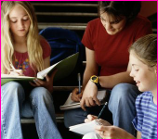 Students in grades 4-12 apply the engineering design process to a real-life problem that affects them at school. The class selects a single problem then comes up with and tests a design solution. Students gain hands-on experience with engineering problem-solving.
Students in grades 4-12 apply the engineering design process to a real-life problem that affects them at school. The class selects a single problem then comes up with and tests a design solution. Students gain hands-on experience with engineering problem-solving.
Read More
Filed under: Grades 6-8, Grades 9-12, Grades K-5, K-12 Outreach Programs, Lesson Plans | Comments Off on Lesson: Problem-solve Your School
Tags: Engineering Design Process, Grades 4-12, Lesson Plan, Problem Solving
Posted on September 27th, 2010 by ASEE
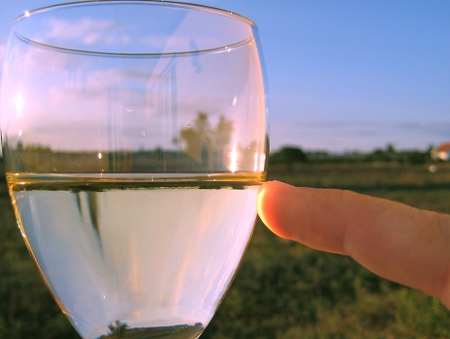 In this lesson, students in grades 3-9 learn how lenses gather and focus light and mirrors bounce light. They conduct experiments with water and mirrors to gain a greater understanding of the basic workings of telescopes.
In this lesson, students in grades 3-9 learn how lenses gather and focus light and mirrors bounce light. They conduct experiments with water and mirrors to gain a greater understanding of the basic workings of telescopes.
Read More
Filed under: Grades 6-8, Grades K-5, Lesson Plans | Comments Off on Lesson: How Telescopes Work
Tags: Lesson Plan, Physics, Telescope
Posted on September 13th, 2010 by ASEE
 This lesson engages students in grades 6-8 in an electrolysis activity separating hydrogen and oxygen to help them understand how hydrogen is created to be used as an energy source.
This lesson engages students in grades 6-8 in an electrolysis activity separating hydrogen and oxygen to help them understand how hydrogen is created to be used as an energy source.
Read More
Filed under: Grades 6-8, Lesson Plans | 3 Comments »
Tags: Electrical, Electrical Engineering, Lesson Plan, Water
 From the “miracle fiber” Kevlar invented by Dupont chemist Stephanie Kwolek to Silly Putty, our world abounds with materials discovered by accident. In this activity from the Society of Women Engineers (SWE), students will learn some serious materials science–and hit several national science and tehcnology standards–by using everyday items to create and investigate the properties of Funny Putty.
From the “miracle fiber” Kevlar invented by Dupont chemist Stephanie Kwolek to Silly Putty, our world abounds with materials discovered by accident. In this activity from the Society of Women Engineers (SWE), students will learn some serious materials science–and hit several national science and tehcnology standards–by using everyday items to create and investigate the properties of Funny Putty.








 Elementary schools are struggling to fit science lessons into a school day packed with other subjects, particularly reading and math that are tied to accountability measures. The amount of science instruction varies by school and district, but many educators say students need more hands-on lessons beginning in elementary school to help prepare them for careers in science fields.
Elementary schools are struggling to fit science lessons into a school day packed with other subjects, particularly reading and math that are tied to accountability measures. The amount of science instruction varies by school and district, but many educators say students need more hands-on lessons beginning in elementary school to help prepare them for careers in science fields. In this quick, hands-on lesson, students in grades K-12 compare sunblock containing nanoparticles to those that do not and learn how nanoparticles are used to help block harmful rays from the sun.
In this quick, hands-on lesson, students in grades K-12 compare sunblock containing nanoparticles to those that do not and learn how nanoparticles are used to help block harmful rays from the sun. In this lesson, students in grades 6-12 use simple materials to design, build, and test a model of a free-standing structure used to support overhead road signs. They begin by learning about the engineering design process and researching about support structures. They then work in groups to design and build their own sign supports. The final designs are tested to see how they stand up to two different types of loads.
In this lesson, students in grades 6-12 use simple materials to design, build, and test a model of a free-standing structure used to support overhead road signs. They begin by learning about the engineering design process and researching about support structures. They then work in groups to design and build their own sign supports. The final designs are tested to see how they stand up to two different types of loads. In this lab activity, students in grades 5 through 9 use a salt/detergent mixture to make a piece of a banana water soluble. Then they add cold ethanol to precipitate a froth of white DNA from the solution. With careful technique the slender threads are wound onto a glass rod for observation of deoxyribonucleic acid, the master code or blueprint of all organisms.
In this lab activity, students in grades 5 through 9 use a salt/detergent mixture to make a piece of a banana water soluble. Then they add cold ethanol to precipitate a froth of white DNA from the solution. With careful technique the slender threads are wound onto a glass rod for observation of deoxyribonucleic acid, the master code or blueprint of all organisms. In this lesson, students in grades 4-12 learn about the history of catapults and how they work. They assemble their own catapult model, making adjustments to improve its performance. Students gain engineering experience while learning principles of physics and working with the scientific processes of experimentation and trial and error.
In this lesson, students in grades 4-12 learn about the history of catapults and how they work. They assemble their own catapult model, making adjustments to improve its performance. Students gain engineering experience while learning principles of physics and working with the scientific processes of experimentation and trial and error. Students in grades 4-12 apply the engineering design process to a real-life problem that affects them at school. The class selects a single problem then comes up with and tests a design solution. Students gain hands-on experience with engineering problem-solving.
Students in grades 4-12 apply the engineering design process to a real-life problem that affects them at school. The class selects a single problem then comes up with and tests a design solution. Students gain hands-on experience with engineering problem-solving. In this lesson, students in grades 3-9 learn how lenses gather and focus light and mirrors bounce light. They conduct experiments with water and mirrors to gain a greater understanding of the basic workings of telescopes.
In this lesson, students in grades 3-9 learn how lenses gather and focus light and mirrors bounce light. They conduct experiments with water and mirrors to gain a greater understanding of the basic workings of telescopes. This lesson engages students in grades 6-8 in an electrolysis activity separating hydrogen and oxygen to help them understand how hydrogen is created to be used as an energy source.
This lesson engages students in grades 6-8 in an electrolysis activity separating hydrogen and oxygen to help them understand how hydrogen is created to be used as an energy source.